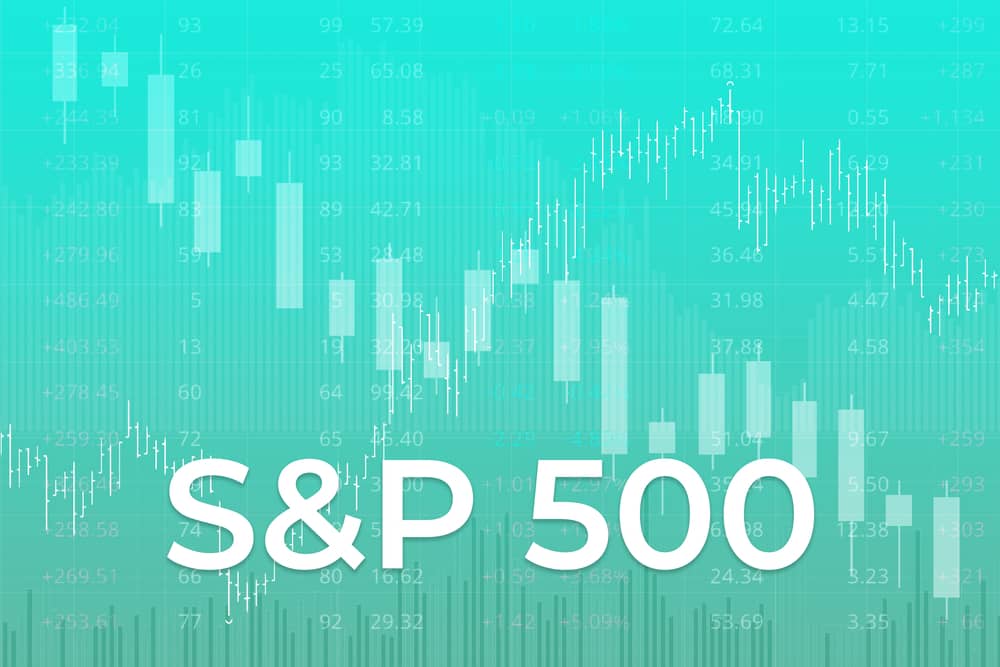
It’s not uncommon for stock market analysts to compare other investments to the performance of the S&P 500 with statements like ‘can X beat the S&P?’
Another popularly-referenced statistic about the index is how it’s generated an average of around 12% yearly return since its 1957 inception, which many investors consider excellent.
Indeed, the S&P 500 continues to be one the most talked-about equity indices (even for non-Americans). Most investors seeking alpha on their investments use the S&P 500 as one of the pinnacles.
This bellwether is a benchmark of the overall health of the stock market and the US economy since it focuses on the largest trillion-dollar companies. So, let’s explore what the S&P is, how it works, and why it’s such a big deal.
So, what is the S&P 500?
The S&P 500 is an equities index tracking the performance of the top 500 large-cap American companies (technically 505, as some corporations issue more than one share class).
The individual stocks within the index are listed on the New York Stock Exchange, NASDAQ, Investors Exchange, and BATS Global Markets (no ‘pink sheets’ here).
Depending on the market or exchange/broker, the S&P 500 uses the ^GSPC, $SPX, INX, US500, or USA500 ticker symbols. S&P stands for Standard & Poor’s, a prominent US-based index provider and credit rating agency (now known as the S&P Global).
The index’s name takes the words ‘Standard’ from the Standard Statistics Bureau and ‘Poor’ from Poor’s Publishing, the latter of which was an investor’s guide on railroad prices.
The two financial data publications merged in 1957 by creating the S&P 500 to reflect the US economy’s overall composition. S&P Global has a host of other indices like the S&P MidCap 400 and S&P SmallCap 600.
Together, all three form the S&P Composite 1500 but, of course, the S&P 500 alone boasts a larger market cap due to the inherently enormous size of the corporations within it.
How does the S&P 500 work?
As we know, an index is a collection or portfolio consisting of individual securities representing a particular market segment. Like any index, a specific mathematical weighting formula exists to determine its price.
In the case of the S&P, it employs the free-float capitalization-weighted method with priority to companies boasting the highest market cap, similar to the calculation model of the DAX and the FTSE 100.
Free float denotes the stocks available for public trade. Market capitalization refers to the market value of such equities by taking the stock’s price multiplied by the number of issued shares.
A committee within the S&P Global determines which corporations continue to be part of the S&P based on industry and size. Every quarter (March, June, September, and December), it readjusts the index accordingly.
Among other requirements, these are the main guidelines for a brand to be an S&P constituent:
- A company must be based in America with a minimum unadjusted market cap of $11.8 billion
- At least 50% of the company’s shares must be publicly traded
- The price of each stock must be at least $1
- The corporation must file a 10-K annual report
- At least half of its fixed assets must be in the US
- The company must prove a minimum of four consecutive quarters of profits
At the time of writing, the top 10 companies by weight on the S&P 500 (the usual suspects) are:
- Microsoft Corporation (MSFT)
- Apple Inc. (AAPL)
- Amazon Inc. (AMZN)
- Alphabet Inc. Class A (GOOGL)
- Alphabet Inc. Class A (GOOG)
- Facebook Inc. (FB)
- Tesla inc. (TSLA)
- NVIDIA Corporation (NVDA)
- Berkshire Hathaway Inc. Class B (BRK.B)
- JP Morgan Chase & Co. (JPM)
Methods of trading the S&P 500
The market hours of the S&P are similar to those of the US stock market generally. Trading occurs during weekdays from 09h30 to 16h00 EST (Eastern Time). There is additional pre-market trading on certain occasions beginning at 04h00 EST and after-hours sessions anywhere from 16h00 to 20h00 EST.
As expected, given the technological advancements of online, there are several methods of trading the S&P:
- Spot CFDs (contracts for differences): CFDs are simply derivatives where you take no physical ownership of the underlying asset, allowing you to go long (buy) or go short (sell) on its value.
Most financial instruments within the retail online trading space are CFDs, and the S&P is no exception.
- ETFs (exchange-traded funds): These are investment funds traded on stock exchanges. Investors particularly favor ETFs for long-term investment purposes compared to CFDs which are more suitable for short-term speculation.
- Futures: A future is another derivative, a type of contract between two parties to buy or sell a financial instrument at a predetermined expiry date in the future.
- Options: An option is another financial derivative where traders are afforded the right (but not the obligation) to trade an underlying market at set expiry date.
Final word
Aside from the S&P’s status as a US stock market indicator, many investors prefer investing in indices over-investing in the individual stocks underpinning them.
Hence, from an investing perspective, the S&P is a convenient method of investing broadly in the US economy with just a single instrument. You could alternatively purchase the individual stocks of each company represented in the index.
Though, needless to say, this exercise would be tedious, costly, and make it tricky to get the correct mix of stocks within the basket. Moreover, most experts frown upon investing in individual stocks for various reasons.
When most American analysts and investors proclaim the ‘market is up,’ or the ‘market is down,’ they are often referring to a specific stock index. Nine times out of ten, it’s the S&P.
There’s a long-held consensus that if the bulk of the larger-capped corporations are doing well, this translates into a healthier economy since such companies contribute substantially to it (and vice versa).
Like any financial instrument, there are opposing opinionators who feel the S&P’s significance is overstated. Some of the index’s shortcomings include its inherent disproportionate bias to put more weight on the larger companies and not covering non-American enormous brands.
Furthermore, investors’ portfolios cover far more than equities, which isn’t reflected in the S&P. However, all in all, it’s true when they say old habits die hard.
The S&P unanimously remains the benchmark for investors, particularly those in America, to pivot their investment choices and compare the performance of their other investments against it.





